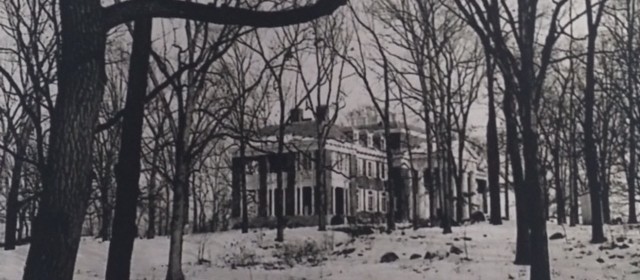Timeline | Thornwald Estate | Public Ownership| Debate over use | Converted mansion into retirement home | Dedication of Thornwald Park |The amphitheater | The land | Historical Resources|Photo Gallery
Thornwald Estate
The story of Thornwald Park begins with the Sadler family of Carlisle, Pennsylvania. Although Thornwald Mansion is privately owned, the grounds for this family estate form the basis of the existing park. The Sadlers were a prominent family of the town. Wilbur Sadler helped found Dickinson College School of Law and served as the President Judge of the Cumberland County Courts. His sons Wilbur Jr., Lewis, Sylvester, and Horace also found success and fortune in public service. Lewis became the Highway Commissioner for Pennsylvania, Sylvester served as an Associate Justice of the Pennsylvania Supreme Court, and Wilbur was nominated to the Adjutant General of New Jersey under Governor, and future President, Woodrow Wilson (1).
The impetus for Thornwald’s construction derived from the aspirations of Lewis Sadler. As Highway Commissioner of Pennsylvania, Lewis desired a respectable estate modeled after the grand homes of Europe of which he was so fond (2). Sir Ralph Sadler served as secretary of state for King Henry VIII in 1540 (3). His home was three stories with a brick exterior and oak paneling on the walls to accompany the traditional English interior. Lewis Sadler modeled the house he would build on his ancestor’s land. The architects of Thornwald designed the mansion in a Palladian style and the accompanying grounds on a traditional European symmetrical form highlighted by two fountains (4). Of note is the decision to include a golf course on the grounds. This can be seen as reflecting popular interests of the time in the sport and its symbolic value as a sport of the wealthy. The immense and refined grounds and mansion fitted Sadler’s desire for a homestead worthy of his and his family’s status. The house received the name after an article about its completion first referred to it as “Thornwold”. It was called this because of the grove of hawthorn trees near the mansion(3). Since then, the name has morphed into what it is known as today. Unfortunately, he did not get to enjoy Thornwald for long and died in 1922. Nonetheless, the estate passed into the possession of his family with his siblings assuming residence in the house.
(1)”Sylvester Sadler, Noted Jurist, Dies,” The New York Times, 02 March 1931, Accessed 4 April 2016 through ProQuest Historical Newspapers.
(2)http://thornwaldmansion.com/thornwald/#direct
(3)Laura L Strickler, Thornwald: A Testament of the Sadler Legacy (Pennsylvania: 2012), Print.
(4)Gross, Greg, “A look inside the walls of Thornwald,” The Sentinel, 13 October 2010, Accessed 4 April 2016, http://cumberlink.com/news/local/a-look-inside-the-walls-of-thornwald-mansion/article_d9541794-d740-11df-85b3-001cc4c002e0.html
Sources:
Strickler, Laura L. Thornwald: A Testament of the Sadler Legacy. Pennsylvania: 2012. Print.
“Sylvester Sadler, Noted Jurist, Dies.” The New York Times. 02 March 1931. Accessed 4 April 2016 through ProQuest Historical Newspapers.
Gross, Greg. “A look inside the walls of Thornwald.” The Sentinel. 13 October 2010. Accessed 4 April 2016.
http://cumberlink.com/news/local/a-look-inside-the-walls-of-thornwald-mansion/article_d9541794-d740-11df-85b3-001cc4c002e0.html
http://thornwaldmansion.com/thornwald/#direct
Hertzler, John Vernon Jr., “Thornwald” First Reformed Church and Youth Department, 1952

